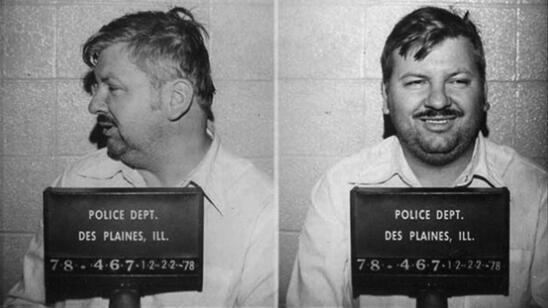Warning: The following contains disturbing descriptions of violence, including sexual violence. Reader discretion is advised.
When teenager Steven Hicks, of Coventry Township, Ohio, didn’t come home one night in June 1978, his parents figured he had simply stayed out late. But as the days passed with no sign of the young man, his family grew increasingly worried.
He never came home.
Hicks’ parents finally learned the truth about their 18-year-old son’s disappearance 13 years later, when Jeffrey Dahmer admitted to beating him with a barbell, strangling him and dismembering his body.
According to Dahmer, Hicks was the first of 17 men he killed, dismembered and, in some instances, cannibalized and engaged in sex acts with their corpses. But after killing Hicks in 1978, Dahmer waited nearly a decade before murdering his next victim. Why?
[Stream Invisible Monsters: Serial Killers in America, about Jeffrey Dahmer and other serial killers, with no sign in required in the A&E app.]
Investigators only have Dahmer’s word that he didn’t kill anyone between 1978 and 1987. But, if what he said is true, the long gap fits the established profile for serial killers, who often commit their first murder randomly.
“A serial killer’s first murder is often an anomaly,” Peter Vronsky, a serial killer expert who researched Dahmer for his book American Serial Killers: The Epidemic Years, 1950-2000, tells A&E True Crime. “Serial killers sometimes commit their first murder by accident or spontaneously on an impulse, without much planning or fantasizing about it beforehand.”
Dahmer Fits Serial Killer Patterns
Dahmer was just 18 when he killed Hicks, much younger than the average age of serial killers, which researchers have determined is around 29 years old. Though experts can only speculate today (Dahmer died in 1994 in prison), many say they believe Dahmer was still coming to terms with his sexual fantasies when he killed Hicks.
“Dahmer was developing his sexuality and he realized he wasn’t like other people; he was gay,” Eric Hickey, a criminal psychologist at Walden University and expert on serial killers, tells A&E True Crime. “Dahmer was still developing himself. You don’t see too many serial killers become serial killers as teenagers. Most of them are still exploring their sexuality, their paraphilia (sexual desires), and then they really start to act out more in their 20s and 30s.”
Dahmer’s abnormal sexual desires mostly centered on keeping or possessing a male love object. He wasn’t interested in killing itself, Hickey says, but rather, he murdered men as a way of ensuring they would not leave him, then acted out his sexual fantasies with their corpses.
Fueled by his desires, Dahmer also turned to other forms of inanimate companionship —mannequins and, Hickey suspects, corpses recently buried in cemeteries.
“Dahmer was not sadistic,” Hickey says. “He was engaging in fantasies about being with people who were not alive, who wouldn’t reject him.”
Dahmer’s extreme lengths to avoid rejection likely started during his childhood, Hickey says. His father worked long hours as a research chemist and his mother suffered from depression, which likely meant they gave Dahmer little attention. When his parents divorced in 1978, Dahmer’s father, mother and younger brother all moved out, leaving Dahmer alone in the family’s house in Bath Township, a northern suburb of Akron, Ohio.
“The sense of abandonment and rejection was just overwhelming for him,” Hickey says. “He progressed to the point where he knew when he took men home, they were never going to leave, no matter what. The trauma in childhood helps develop fantasies that then fuel the behavior.”
Hicks Remembered as Warm, Caring
Dahmer told investigators he saw Hicks hitchhiking and brought him back to the Dahmer family home. When Hicks tried to leave, Dahmer told investigators he struck Hicks with a barbell, strangled him and then cut up his body. He later scattered Hicks’s bones around the yard.
Hicks was just 18 at the time of his murder. He had recently graduated from Coventry High School, which created the Steven Hicks Scholarship after his death, according to his mother’s obituary. Friends and family members described Hicks as warm, friendly and compassionate. During a hunting trip before his death, Hicks cried after shooting a rabbit, according to his father, Richard.
Following Hicks’s disappearance, his parents did everything in their power to find him, even going so far as to hire a private detective and offer a $2,500 reward for information leading to their son.
They finally got closure when Dahmer was arrested in Milwaukee in 1991. After Dahmer admitted to the killing, investigators found Hicks’s teeth and bone fragments around Dahmer’s childhood home. He was eventually sentenced to 16 life sentences—15 in Wisconsin and one in Ohio—for the deaths of Hicks and the other victims.
At Dahmer’s Ohio sentencing hearing, Hicks’s mother, Martha, told the courtroom that her son had a “smile that could keep him out of trouble most of the time,” but that he had never met a “monster” like Dahmer before. In 1992, she sued Dahmer and his family, seeking $50 million for Dahmer’s parents’ negligence and failure to prevent their son from killing. In the lawsuit, Martha said Dahmer’s parents should have known he ″was deviant and destined to cause injury and death to others.″ Dahmer and his family were found guilty in that lawsuit, though it’s unclear how much, if any, money the Hicks family received from the Dahmers. Martha Hicks died in 2008 and Richard Hicks died in 2010.
Questions Remain about Long Gap
In the nine years that followed Dahmer’s first murder, committed just a few weeks after he graduated from high school, he briefly enrolled in college classes, served in the U.S. Army and worked in a chocolate factory. He drank heavily and had several run-ins with the law, including arrests for disorderly conduct and indecent exposure.
Dr. Christine Sarteschi, associate professor of social work and criminology at Chatham University, tells A&E True Crime there is still no real clarity on what Dahmer may have been doing during the period after Hicks’s murder.
Though Dahmer did not admit to any murders during those nine years, Sarteschi says it’s possible he kept killing after Hicks—but never got caught.
In 2017, two soldiers stationed in Germany with Dahmer said he drugged and raped them, but ultimately decided to let them live. Following his arrest in the United States, German police also investigated whether Dahmer was responsible for several unsolved murders there, but Dahmer denied any involvement in those crimes.
“It wasn’t like he didn’t know that drugging people and all the other stuff he did was wrong—he knew it was wrong, and he did it anyway,” Sarteschi says. “He just kept moving toward these behaviors.”
It’s also possible that Dahmer was simply trying—and, largely, failing—to create a normal life for himself after killing Hicks.
“It’s really not clear how long the [killing] hiatus was and if he was able to [avoid] committing murders,” says Sarteschi. “It could’ve also been that he was trying to get his life together.”
Related Features:
Connecting With Jeffrey Dahmer: The Detective Who Grilled the Serial Killer Had Mixed Emotions
First They Tortured Animals, Then They Turned to Humans
Jeffrey Dahmer, Albert Fish and More: Why Do Some Serial Killers Turn Into Cannibals?
Jeffrey Dahmer’s Childhood: A Pail of Animal Bones Was His Toy Rattle


